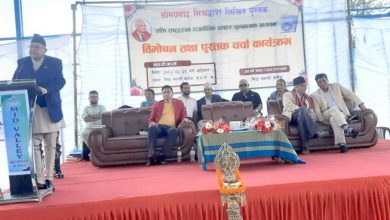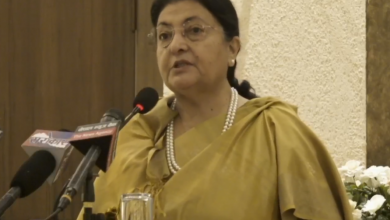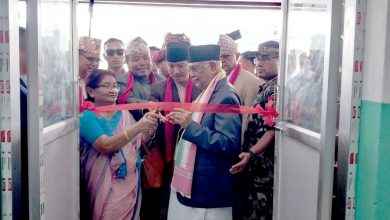Rhino census uncertain due to budget crunch following suspension of USAID project
Chitwan, March 2: The rhino census, which is conducted every five years, is now uncertain due to a lack of budget.
This year, there has been a budget shortage for conducting the rhino count, as it has traditionally relied on funding from donors.
The Department of National Parks and Wildlife Conservation typically conducts the rhino census in collaboration with various agencies working in the park.
Haribhadra Acharya, the Department’s ecologist and information officer, said that an agreement had been reached with USAID’s ‘Jal Jungle Project’ for the purchase of necessary equipment for the census. However, the census is now uncertain following the suspension of the project.
The project had already begun the process of procuring materials by issuing a tender notice. It was supposed to cover the costs of GPS equipment, laptops, large cooking utensils, tents, and other materials required during the census inside the park.
“The project was to provide materials worth Rs 5 million. It is estimated that around Rs 15 million would be required to complete the census,” he said.
Preparations were made to conduct the census in partnership with the World Wildlife Fund Nepal, ZSL Nepal, National Trust for Nature Conservation, and other organizations.
According to Acharya, the rhino census must be completed by mid-April. Preparations were scheduled to take place from March 18 to April 7, with the results expected to be released by the second week of April.
“The census can’t be delayed beyond mid-April. The preparations take at least 10 days,” he explained.
Acharya emphasized that the department’s census program has been impacted by the suspension of donor agency support at the last moment.
Dr. Ram Chandra Kandel, Director General of the Department, confirmed that the suspension of donor support has affected the census during its final preparations.
He added that the rhino census could still be conducted if the necessary budget is secured through discussions with the Ministry. If funding is not received, the census may have to be postponed.
The tiger census, scheduled for next year, will also be affected. Kandel mentioned that conducting the tiger census would be easier if the rhino census is completed this year, as it would be difficult to conduct both censuses simultaneously.
While rhinos are being monitored, the census is necessary to determine their exact population and condition. The last rhino census was conducted in 2021.
The census will also help manage and conserve the rhino population by determining their numbers in specific areas.
The endangered one-horned rhino is found in Chitwan, Parsa, Bardiya, and Shukla Phanta national parks. As of the 2021 census, Chitwan National Park has the highest number of rhinos at 694, and the total rhino population in Nepal has reached 752.
RSS








Comments